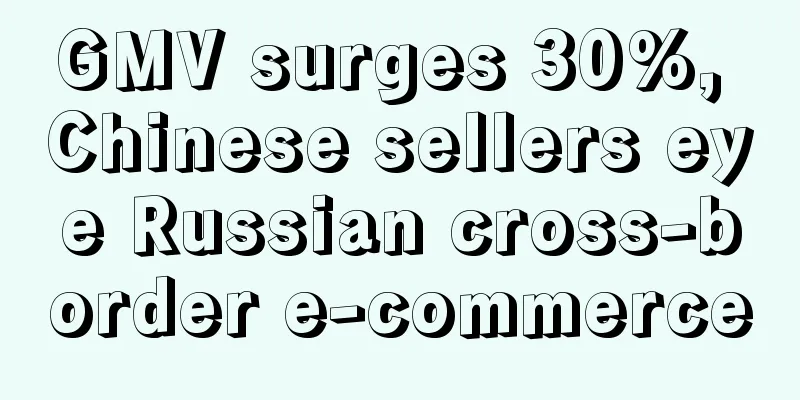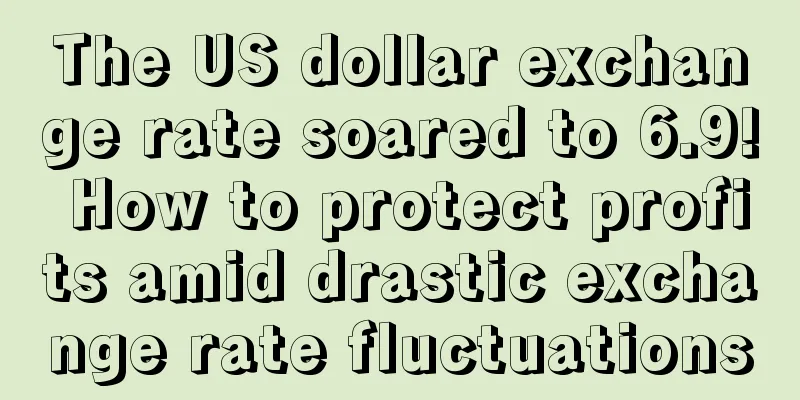GMV surges 30%, Chinese sellers eye Russian cross-border e-commerce

|
When the domestic e-commerce and logistics markets encountered a bottleneck of slow growth, more and more people turned their attention to foreign countries to seek new opportunities. With the increasing popularity of the Internet in Russia and the rise of mobile shopping, the Russian e-commerce market has great potential and is showing a rapid growth trend. According to statistics released by the General Administration of Customs of China on March 7, the total trade volume between China and Russia exceeded US$37 billion from January to February 2024, a year-on-year increase of 9.3%. It can be seen that Russian cross-border e-commerce has huge room for development. For sellers who intend to enter the Russian market, Russian e-commerce is still in its early stages. Now is the best time to enter the market. 0 1 Russian e-commerce market trends Russian e-commerce is developing rapidly Russia has the largest number of Internet users in Europe and ranks seventh in the world. As of 2023, there are approximately 129.8 million Internet users in Russia, with an Internet penetration rate of 89%. Thanks to increasingly efficient delivery capabilities, strong brand effect and Russian buyers' gradual online shopping habits, the number of platform users has skyrocketed. Although Russia's e-commerce started late, it has maintained a good development trend in recent years. According to a report by Statista, last year, the growth rate of Russian e-commerce reached 15%, almost 10 times that of the real economy and traditional retail industry. In the same year, Russia's e-commerce transaction volume increased by more than 30% year-on-year, and it is expected to continue to grow by 25%-30% year-on-year this year . Data Insight predicts that Russia's e-commerce market will grow by more than one-third from 2021 to 2025. High level of spending power As of the end of 2022, according to the World Economic Report, Russia is still one of the five largest economies in the world and the largest purchasing power parity economy in Europe. Tradingeconomics data shows that Russia's per capita GDP (calculated in terms of purchasing power parity) has reached US$27,584.17.
Product selection requirements in the Russian market As Russians' living standards improve, more electronic products and household appliances are gradually entering ordinary people's homes. For young people, lightweight electronic products are their favorites, and household appliances, furniture and daily consumer goods are the best. According to the data, the sales of daily consumables account for 33% of the total retail sales. For Chinese companies that want to establish their own brand products in Russia, the Russian market is the best touchstone. Without investing too much money, as long as you identify the corresponding consumer groups, you can start operating overseas brands just like operating brands in China. 0 2 Chinese brands fill the gap in the Russian market Local platforms see “early dividends” European and American e-commerce platforms have either withdrawn or shrunk in Russia, leaving a large number of gaps in the market, and a series of "new" opportunities have emerged in Russia's local e-commerce market. For example, Russian media conducted a survey in mid-last year and found that in the clothing industry, Chinese brands such as Li Ning, 361 Degrees, Erke, and Xtep are occupying more and more of the Russian market, and many retailers even purchase goods directly from these brands. The head of Russia's Urban Vibes shopping platform once said that Li Ning Company has several stores in Russia. At the same time, the massive influx of Chinese goods has alleviated Russia's material supply difficulties, creating a win-win situation. For example, a large amount of Chinese daily necessities and textiles have entered Russia, which has greatly alleviated Russia's inflationary pressure and made people's livelihood security more convenient. This two-way movement has accelerated Russia's e-commerce market. Currently, Chinese sellers’ products occupy Russian local platforms such as Ozon and Wildberry. On some platforms, Chinese products account for 90% of the product categories, from clothes to toothbrushes, from electrical appliances to mobile phones, almost all of which come from China. As European and American platforms withdrew, local platforms such as Ozon saw an “early dividend”. Many Chinese sellers relied on “carrying” popular products from other platforms and placing them on Ozon saw huge sales. Image source: Ozon homepage It is reported that in the first half of 2023, the share of the two giants, Wildberries and Ozon, increased by 35%. In June and July, they accounted for the highest share of all online orders, reaching 77%, up 9% year-on-year. According to data released by Data Insight, the number of Wildberries and Ozon sellers is expected to reach 700,000 by the end of 2024, a significant increase from 550,000 in 2023. The reason behind this growth is the continuous optimization of the entry policies and platform systems of the two major platforms, which provide sellers with a more convenient entry process and lower entry thresholds. Ozon's performance report for the period ending December 31, 2023, released some time ago, showed that its full-year GMV (including services) increased by approximately 110% year-on-year, and the order volume exceeded 950 million , showing a remarkable growth momentum. At the same time, Wildberries' annual GMV reached US$25.8 billion, with an average daily order volume of 10 million. Among the 200 Chinese sellers who joined during the earlier test, some achieved sales of 500,000 in just three weeks , showing equally strong performance. The huge potential of Russia's e-commerce market has also been confirmed by the survey reports of Yandex Market and GfK Rus. According to the survey data, in 2023, the proportion of online shoppers in Russia will reach 67% of the total number of Internet users, and the number of online shoppers in small towns and rural areas will increase by more than 12%. Data released by the Russian Association of Internet Trade Companies showed that Russia's online sales in 2023 were close to 6.4 trillion rubles, a year-on-year increase of 28%, providing strong support for the rapid growth of Russia's e-commerce market. In the Russian domestic e-commerce market, in addition to Ozon and Wildberries, platforms such as AliExpress and Yandex are also competing fiercely. Perhaps it is this kind of competition that has made them the leaders in the market. Facing the big pie of the Russian market, everyone wants to get a bigger share, so they must constantly improve themselves and strengthen their platform strength. This has formed a virtuous circle: the better the platform does, the more attractive it is to sellers and buyers, and the platform's market share will also increase accordingly. 0 3 Sending positive signals How Chinese merchants choose products to enter the market According to the current data analysis of the platform, many general goods sold on Wildberries and Ozon have higher gross profit margins . Although sales volume is not as good as that of major sites such as Amazon in Europe and the United States, fortunately there is very little competition, and the overall input-output ratio is still quite good. With the rapid development of China-Russia economic and trade cooperation, Russian users have an increasingly strong demand for Chinese products, and an increasing demand for personalized, distinctive, and functionally diversified products. Therefore, for Chinese sellers, it is a compulsory subject to study target users and products carefully, enrich styles, and improve quality! How to select products with great potential has become the first major issue for sellers. As a manufacturing powerhouse, China has abundant products and price advantages. Toys, textiles and clothing, and maternal and child products have always been the three major categories in which my country has a competitive advantage, and are also the categories that local platforms such as Ozon focus on developing. Maternity pillows, bedding sets, and bedside mats are also key sales categories developed on the platform. In addition, school supplies are essential in the Russian shopping list. In addition, sellers can pay attention to the following product display dimensions: Furniture categories: Car emergency starting power supply devices, DIY hot-selling products, tool kits, power tools, tool accessories New Year's elements: lamps, mood lights (it is recommended to incorporate elements of Russian culture or New Year's culture, such as using traditional patterns and colors) Sales of the three major electronic categories grew rapidly: monitors grew by 60%, gaming notebooks grew by 440%, and VR game consoles grew by 105%. 0 4 Opportunities and risks Opportunities and risks always coexist. In recent years, Russia has been somewhat turbulent, and some people may think that its e-commerce industry will shrink, but the fact is just the opposite. Since 2020, Russia's e-commerce development has been booming. As the EU has repeatedly increased sanctions, Russia's order purchases have gradually shifted to China. It is obvious that the rapidly growing market has attracted a large number of Chinese sellers. While opportunities are increasing, risks are also gradually emerging. Take the Ozon platform as an example. Currently, the Ozon platform has begun to involute. Whether it is product categories or prices, basically all the categories you can imagine have been occupied by early sellers, and prices have gradually begun to compete. Another major risk is the risk of repayment. Recently, large-scale sanctions from Europe and the United States in February directly caused problems in the settlement of the Ozon platform, which is also a certain risk. Therefore, Ozon previously required sellers to re-register new stores on a large scale to switch to the RMB settlement system. The initial notice was to complete the switch before April 1, otherwise they would have to start paying. Another risk is that, as we said above, Russia's overall market economy is highly concentrated. Taking the daily necessities industry as an example, Russia's top five supermarkets account for more than 80% of Russia's total daily necessities sales. However, it is precisely because of these oligopolistic market models where the strong always get stronger that the overall survival space of many small and medium-sized sellers is under pressure. In a market squeezed by giants, many small and medium-sized sellers are caught in a dilemma, their business is difficult to maintain in the long term, and they are prone to operational risks such as cash flow difficulties. |
>>: Major adjustment! Amazon policy changes again
Recommend
Costco's Q2 revenue was $62.53 billion, and e-commerce sales increased by 19%
It is learned that on March 7, the US retail giant...
What is Honestbee? Honestbee Review
Honestbee is an online grocery delivery service co...
What is Conversion Rate? Conversion Rate Evaluation
Conversion rate is the ratio of the number of comp...
Shopify Black Friday GMV hits record! Strong performance in multiple categories
It is learned that with the end of the Black Frida...
Six pitfalls of being an Amazon employee!
text The first pitfall: black technology Due to h...
Will Amazon face a strong rival? ByteDance plans to launch a cross-border export platform!
Global cross-border e-commerce transaction volume ...
“0” tariffs! “Billions” of business opportunities! RCEP dividends are waiting for you!
RCEP: The world's largest free trade zone is ...
Farewell to peak season! Foreign sellers have zero orders during Chinese New Year, Amazon clears out low-performing accounts!
▶ Video account attention cross-border navigation ...
79 Amazon tricks that cannot be found on Baidu (black technology and white hat gameplay)
Image source: 123rf.com.cn Quickly promote the 40t...
Online searches in the US during Cyber Week reached 12.4 billion! Luxury goods and jewelry surged 79%!
According to Algolia’s research, online searches i...
A girl who returned from overseas pursued her dream of becoming the CEO of Amazon after three job changes
Preface of the Little Clone: After Teacher Alice’...
How to check the lawyers on Amazon brand blacklist? How to check the lawyers’ qualifications?
Find a lawyer's name Open the website of the ...
What is AVASK? Review of AVASK
AVASK (UK) Accounting and Business Consultants mai...
Amazon’s pricing strategy for low-priced products that will never lose money
text The core of low-priced products: price sensi...
10 golden rules for selecting products for Amazon operations
Opening a store on Amazon is a challenge for novi...









